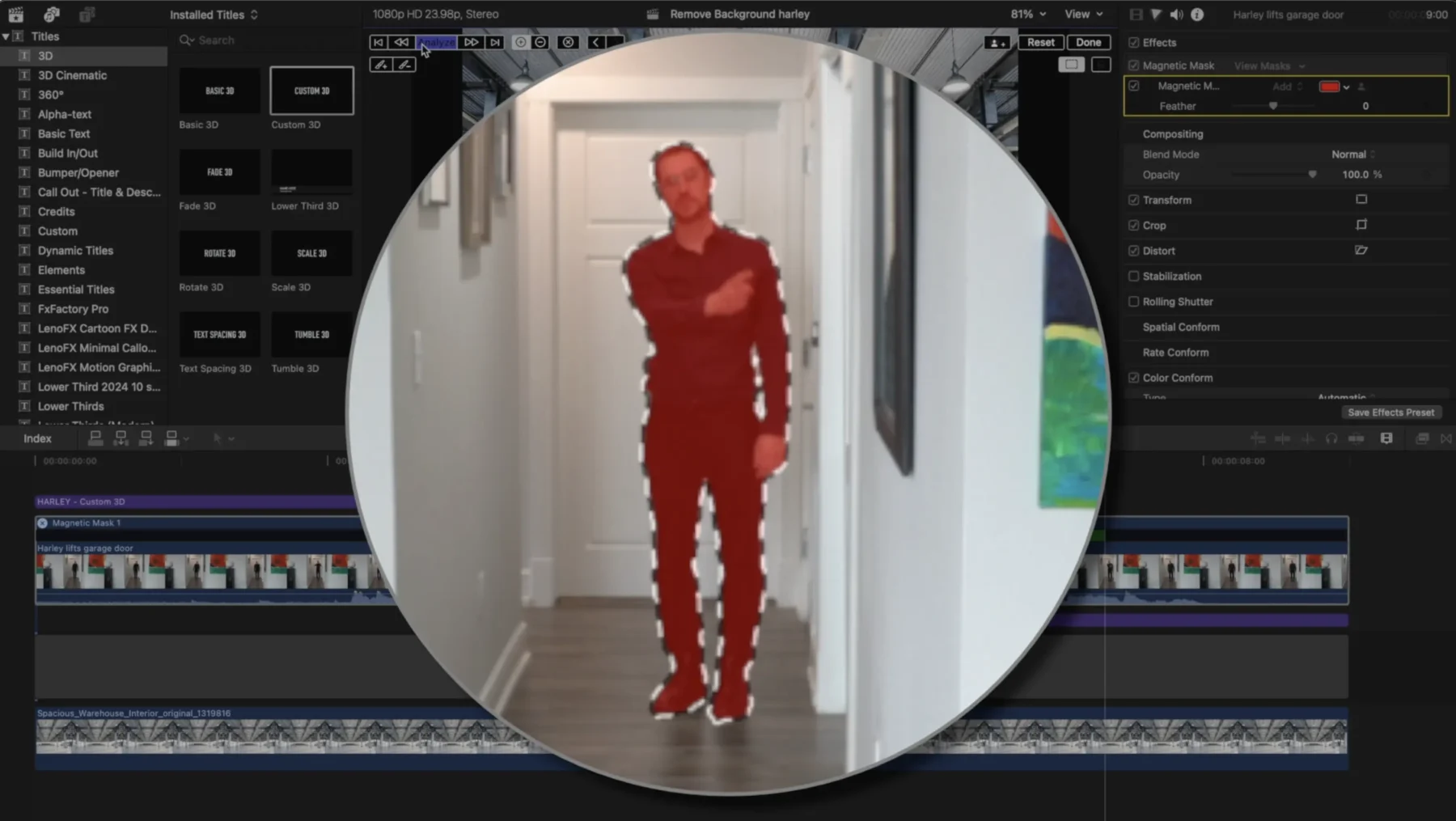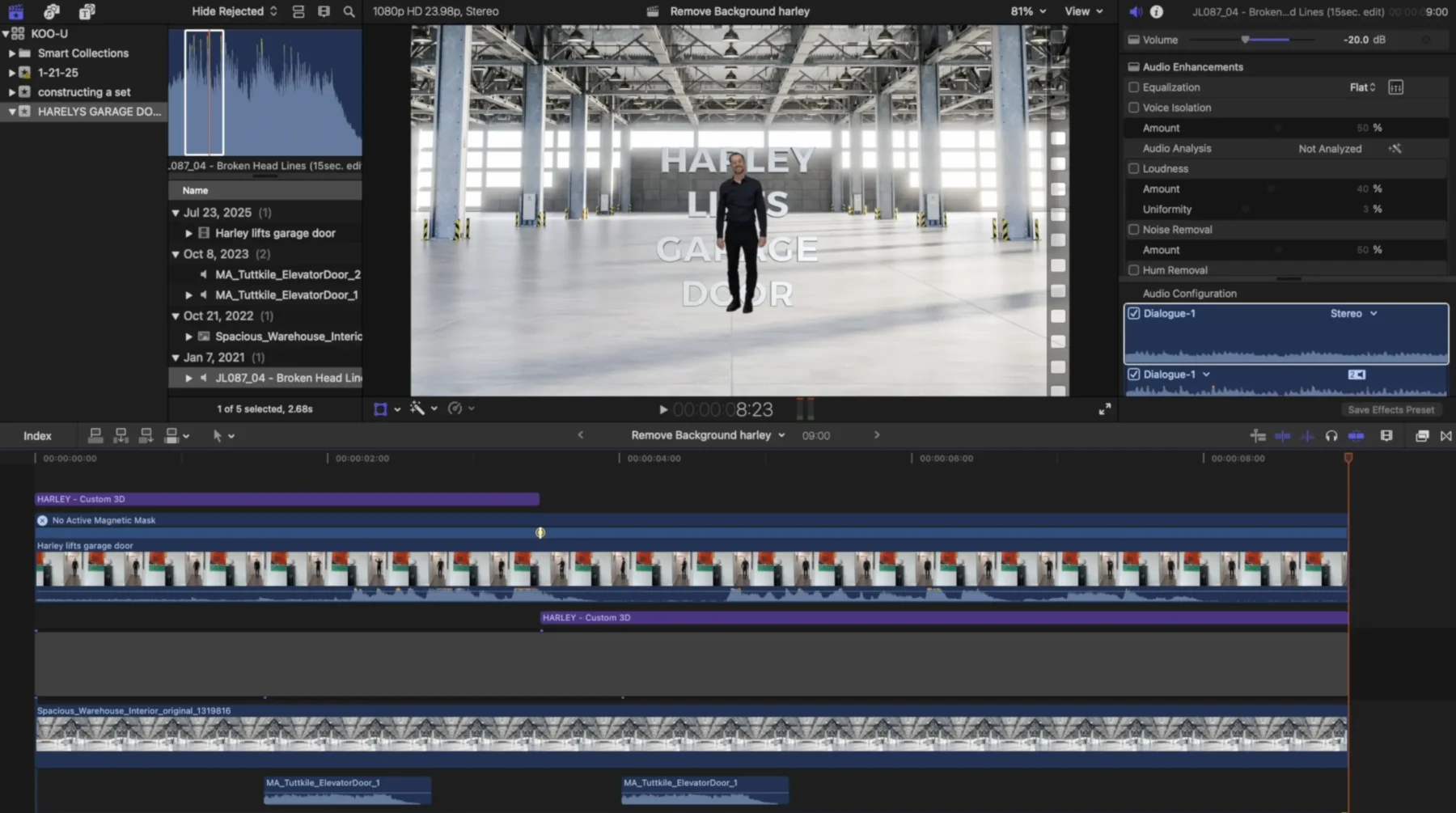Tony Mirones \ 1st August 2025
In the dynamic world of broadcast news, crafting compelling visual narratives is paramount.
So what happens when the story demands showing something you don’t have video for? This common challenge often leads reporters to wish for a green screen. But you can create impactful, interactive standups without a chroma key screen using innovative rotoscoping techniques driven by machine learning and artificial intelligence.
We’ll demonstrate how to rotoscope a subject and create an engaging, “show and tell” style video that will elevate your storytelling.
Drawing Inspiration from the Best
Some of the most skilled visual storytellers in broadcast journalism excel at this very concept. Take Brendan Keefe of Atlanta News First, for example. While we worked together in Cincinnati, Brendan consistently demonstrated his knack for illustrating abstract concepts. Similarly, Joe Little from NBC San Diego is another master of on-screen standups. Both of these professionals effectively use standard editing techniques—cuts, split screens, and dissolves—to build a visual narrative around information that lacks video footage. They can achieve fantastic results, sometimes with minimal editing and other times with meticulous preparation.
The objective is to visually demonstrate an idea or fact that lacks direct video, photos, or even PDFs. Such demos are particularly effective for numbers, statistics, or simple narratives. As Keefe often paraphrased, “Show me what you can’t see.” It sounds counterintuitive, but it’s pure storytelling genius. Let’s dive into how it works.
A Practical Example: “Get Ahead of the NAB Crowds”
The goal was to promote that latakoo was attending the NAB 2025 show. So we had to show something we could not possibly have, crowds and the NAB conference. So we used the script “Get ahead of the crowds” and the text visual was to show our subject, Harley Tamplin, moving in front of the text and getting ahead of the crowds.
Imagine the text: “NAB 2025” in front of your subject on the screen. We’ll animate the text and place it behind the subject without a green screen. We recorded Harley pretending to open a garage door, stepping forward, and then lowering the “door.” The door in our example is text on the screen.
The final product is striking: text appears in front of Harley. He “lifts” the text, steps through, and then “lowers” the text behind him. With a few well-placed sound effects, the illusion is complete, looking and sounding remarkably realistic. So, how did we achieve all of this without a chroma key screen? The answer lies in the power of machine learning and artificial intelligence.
Step-by-Step Guide
Here’s a breakdown of the recording and editing process:
Recording Your Standup
- Lock your camera down: Use a tripod or any stable surface. We recommend shooting horizontally.
- Allow for movement: Ensure ample space for your subject (or yourself) to move freely within the frame.
- Perform your standup: Deliver your segment naturally, keeping the intended interaction in mind.
Editing in Final Cut Pro (FCPX)
- Place your standup: Drag the desired portion of your standup onto the timeline.
- Add and adjust text: Add the text you want to use and position it on the timeline relative to your subject.
- Apply “Magnetic Mask”: Navigate to the color correction/audio enhancement dropdown (bottom left of the viewer/canvas) and select “Magnetic Mask.”
- Select your subject: Tap the elements you wish to keep in the frame (your subject).
- Fine-tune the mask: Use the “Minus Control Point” to refine your selection.
- Analyze the mask: Once satisfied with your selection, tap “Analyze.” This is often the most challenging part of the edit, but crucial for a clean rotoscope.

Now for the interactive “magic”:
- Splice the standup: Cue your cursor to the point where your subject steps in front of the text (i.e., your “garage door” moment) and create a splice.
- Create your interactive text: Add your main text (e.g., “NAB 2025”) to the top video channel. Adjust its size, font, and branding colors.
- Animate the text’s ascent:
- Cue the time cursor to where the subject begins to “lift” the text. Add a keyframe to the text line.
- Move the playhead to where you want the text to stop rising. Add another keyframe and pull the text upward until it clears the subject’s head.
- Animate the text’s descent behind:
- Add a keyframe at the point where the subject walks forward and begins “pulling” the text down and behind them.
- Advance on the timeline to where you want the text to stop moving. Pull it downward to its final desired placement.

The text is still in front of your subject at this point. Let’s change that:
- Splice the text line: Go back to the point on your timeline where you spliced the standup. Now, make a splice on your text line.
- Adjust layer order: Pull the segment of the text line you just spliced below the standup layer.
BAM! You’ve successfully created an interactive standup!
Adding Backgrounds and Enhancements
For our example, we used a still image of a factory as the background, placing it on Video Channel 1 below all other visuals. We zoomed in for appropriate framing and added a Gaussian blur to create a sense of depth of field.
If you prefer not to use an artificial background, no problem. When recording your standup, simply record an extra 30 to 60 seconds of the exact shot without your subject in front of the camera. You can then place this as your natural background, which often looks more authentic and requires less framing work.
To further enhance realism, consider adding drop shadows to your text and incorporating relevant sound effects. For our demonstration, we used an elevator door sound, quirky background music, and a spacious warehouse interior image, all sourced from Motion Array:
Beyond Final Cut Pro (FCPX)
While we used FCPX for this demonstration, these techniques are transferable. You can achieve similar results in Adobe Premiere Pro when combined with After Effects. Even free apps like Instagram Edits offer this type of rotoscoping. Here’s a visual tutorial.
For specific instructions in other popular editing suites, refer to these resources:
Mastering these techniques will empower you to create more dynamic and visually engaging stories, even when video footage or other visuals are not available.
So, how will you apply the “show what you don’t have” principle in your next broadcast?
About the Author
latakoo Broadcast Specialist, Tony Mirones, is a 31-year broadcast and digital news veteran and a 13-time Emmy® Award recipient. He’s worked in markets spanning four states and seven television stations. In 2020, the Ohio Associated Press awarded him “Best Photographer” for the fourth time in 18 years. Tony has led organizations like the Ohio Valley NATAS as President and participated on the board of the KNPA and ONPA. While working with latakoo, Tony helped bring home six national Telly Awards in 2022.

